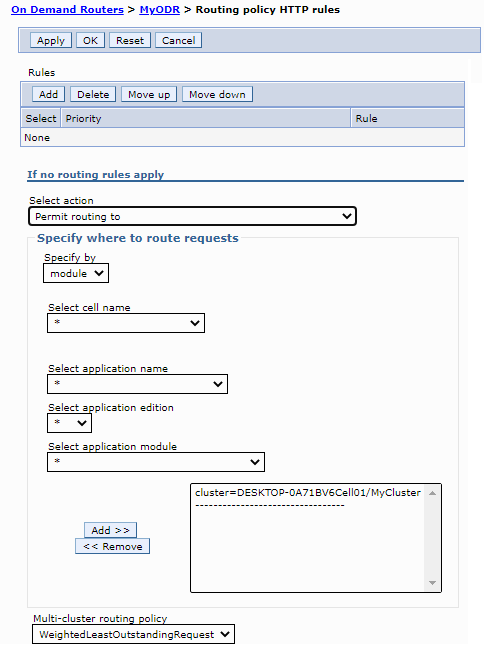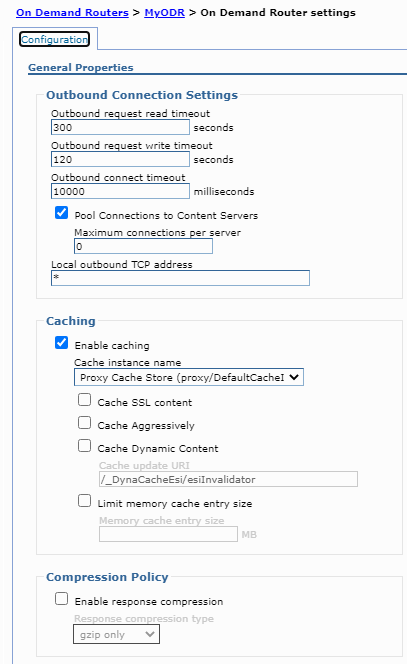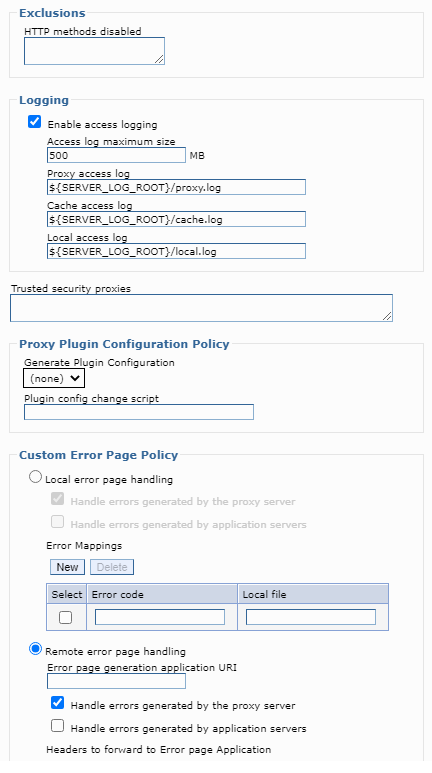Configure On Demand Routers
Overview
First create an on demand router (ODR). Then configure the demand router (ODR) to handle...
- Connections and requests to the application server
- Requests that must be rejected
- How error responses are handled
- The location of the proxy logs
The configuration of the ODR in the DMZ is not supported.
Configure routing rules
-
Servers | Server types | On demand routers | odr_name | On demand router properties | Routing policy HTTP rules

By default, if no rules are specified in the ODR Routing policy HTTP rules section, all the requested contexts are accepted and are routed to the backend application servers within the cell.
The configuration of the ODR in the DMZ is not supported.
We can configure ODRs to perform an SSL offload for HTTPS traffic,
For information on other custom properties, see demand router system and custom properties.
To enable the compression of the HTTP response message body before sending it to the client, go to...
-
Servers | Server types | On demand routers | odr_name | On demand router properties | On demand router settings
| Option | Description |
|---|---|
| gzip-only | Compress the response using the gzip compression mechanism. The response is compressed only if it is acceptable to the client, based on the Accept-Encoding request header. |
| deflate-only | Compress the response using the deflate compression mechanism. The response is compressed only if it is acceptable to the client, based on the Accept-Encoding request header. |
| auto-only | Use either gzip, deflate, or no compression as determined by the client preference. |


What to do next
After configuring the ODR, we can define the ability to route work to nodes that are not a part of our Intelligent Management environment.
Related: